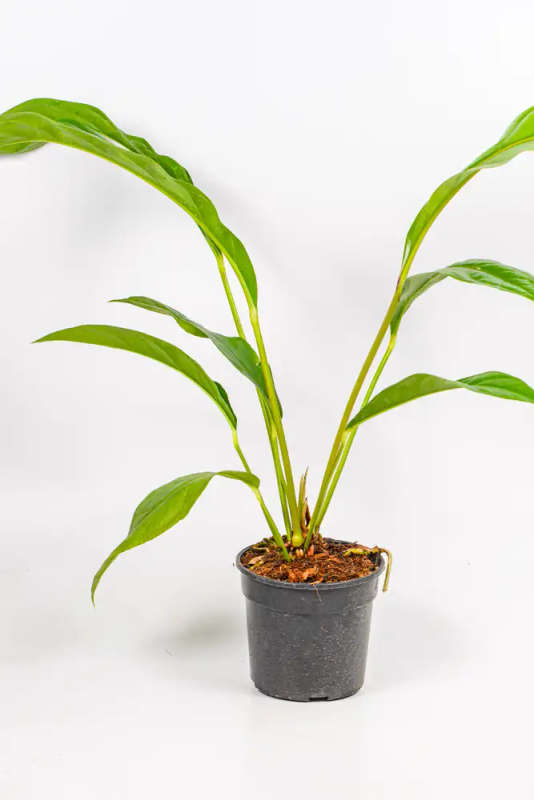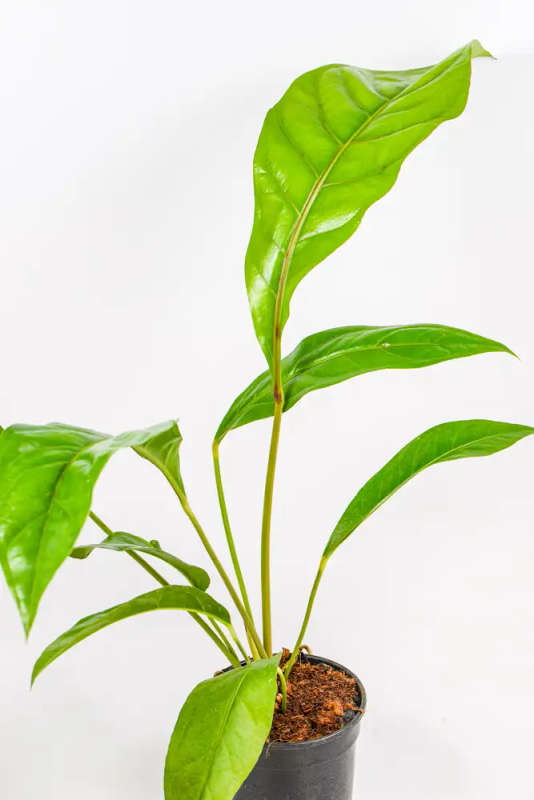





Anthurium Hookeri
Check my rate
| Main centres: | 1-3 business days |
| Regional areas: | 3-4 business days |
| Remote areas: | 3-5 business days |






| Main centres: | 1-3 business days |
| Regional areas: | 3-4 business days |
| Remote areas: | 3-5 business days |
Anthurium hookeri, brings lush tropical texture with its broad, rippled leaves and rosette growth habit. This variety is prized for its structural, sculptural look. It's easy to care for, non-toxic to pets, and thrives in bright rooms with minimal fuss.
Botanical Name: Anthurium Hookeri
Anthurium hookerii stands out with its elegant, upright rosette of leathery green leaves that arch outward like a fountain. The wavy edges and dense texture give it a bold, architectural feelperfect for adding lush greenery without relying on blooms. It doesn't produce the typical anthurium flowers but instead develops interesting spadices with small, bead-like fruit, which adds a natural curiosity to its tropical charm.
This species hails from the rainforest floors of South and Central America and has adapted well to life as a houseplant. Its low-maintenance nature and tolerance for indoor conditions make it ideal for both beginners and seasoned plant lovers. It can handle the drier air of our homes and doesn't fuss if you miss a watering here and there. Even betterit's considered non-toxic to pets, which makes it a favourite in pet-friendly households.
Whether styled in a large ceramic pot or nestled among other foliage plants, Anthurium hookerii is a great choice for those looking to bring strong texture and form into their collection.
Light:
Prefers bright, indirect light. Avoid harsh afternoon sun, which can scorch the leaves. It can tolerate medium light but grows more vigorously with good light exposure.
💧 Water:
Water when the top 34 cm of soil feels dry. It likes consistent moisture but not soggy conditions. Reduce watering slightly in winter.
🌱 Soil:
For optimal drainage and healthy roots, you can use our premixed Aroid Mix, or you can create your own potting mix using Barks Unlimited Potting Soil combined with Perlite.
🌡 Temperature:
Thrives in temperatures between 1828°C. Avoid cold draughts and protect from frost. It enjoys a humid atmosphere but tolerates average indoor humidity fairly well.
🌸 Fertiliser:
Feed monthly in spring and summer using a controlled release fertiliser or an organic fertiliser. Pause feeding during colder months.
🪴 Repotting:
Repot every 23 years or when the roots fill the pot. Use a chunky mix and incorporate Bark Chips to help with aeration and drainage.
🐛 Pests:
Generally pest-resistant, but watch for aphids or scale. Wipe the leaves clean and treat early with insecticidal spray if needed.
Be sure to visit and follow us on our socials
